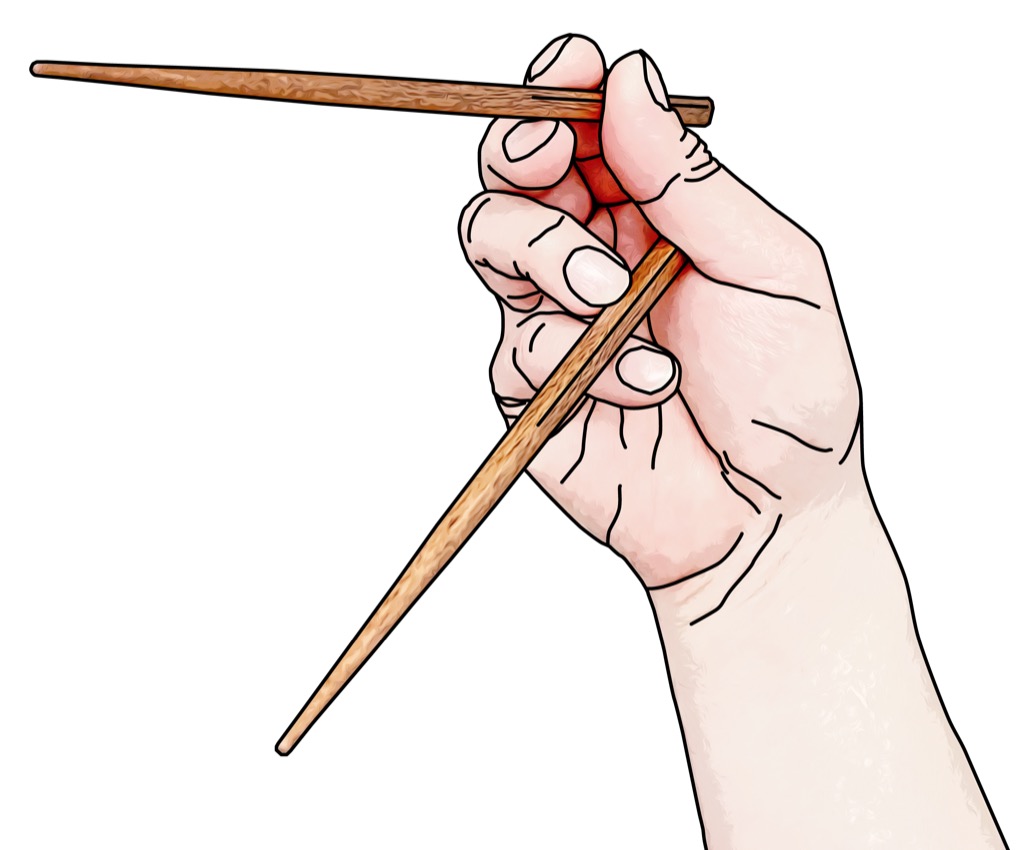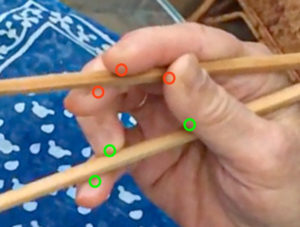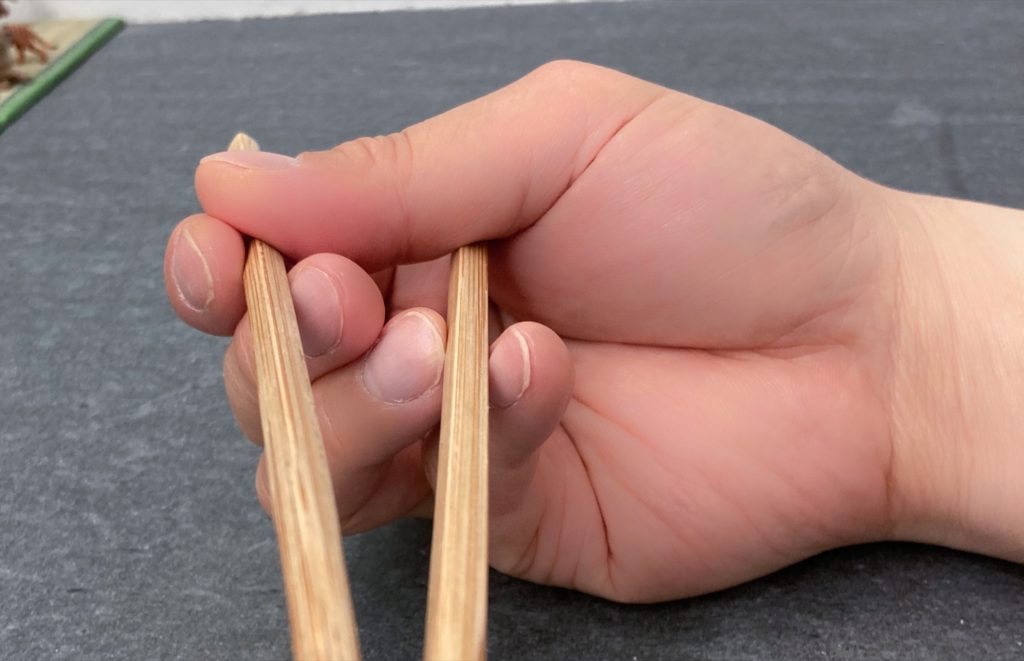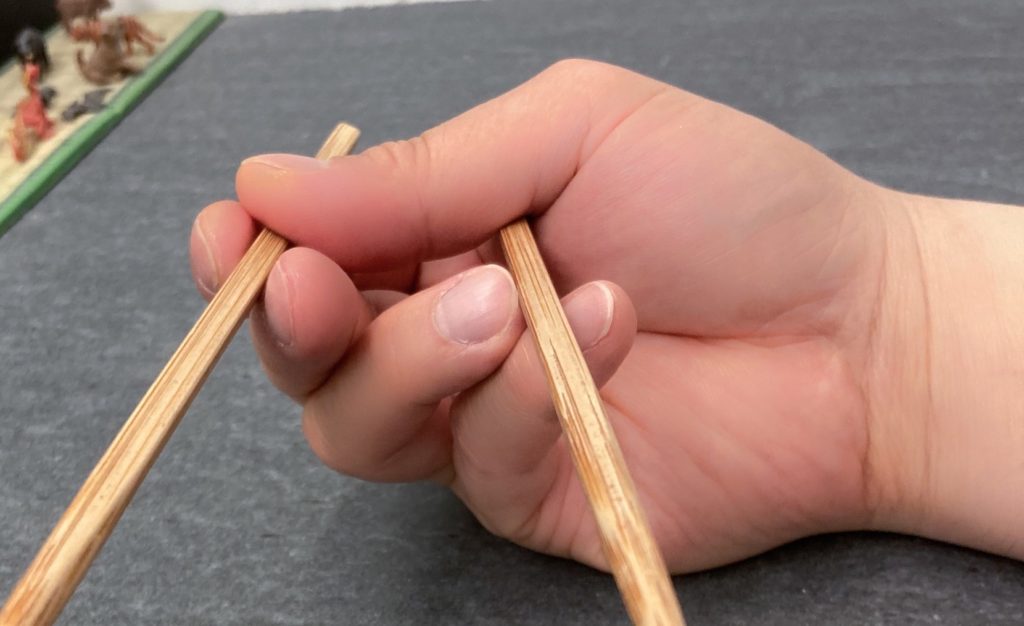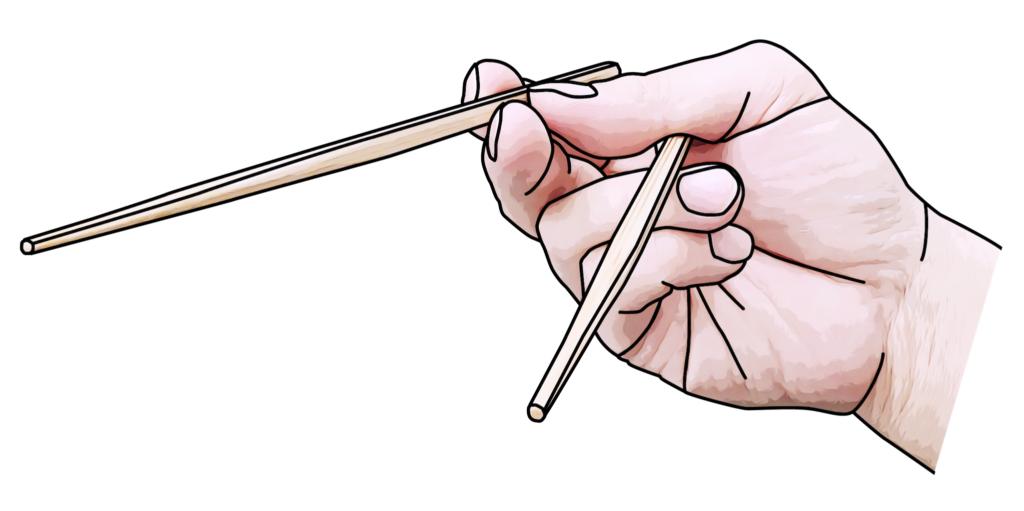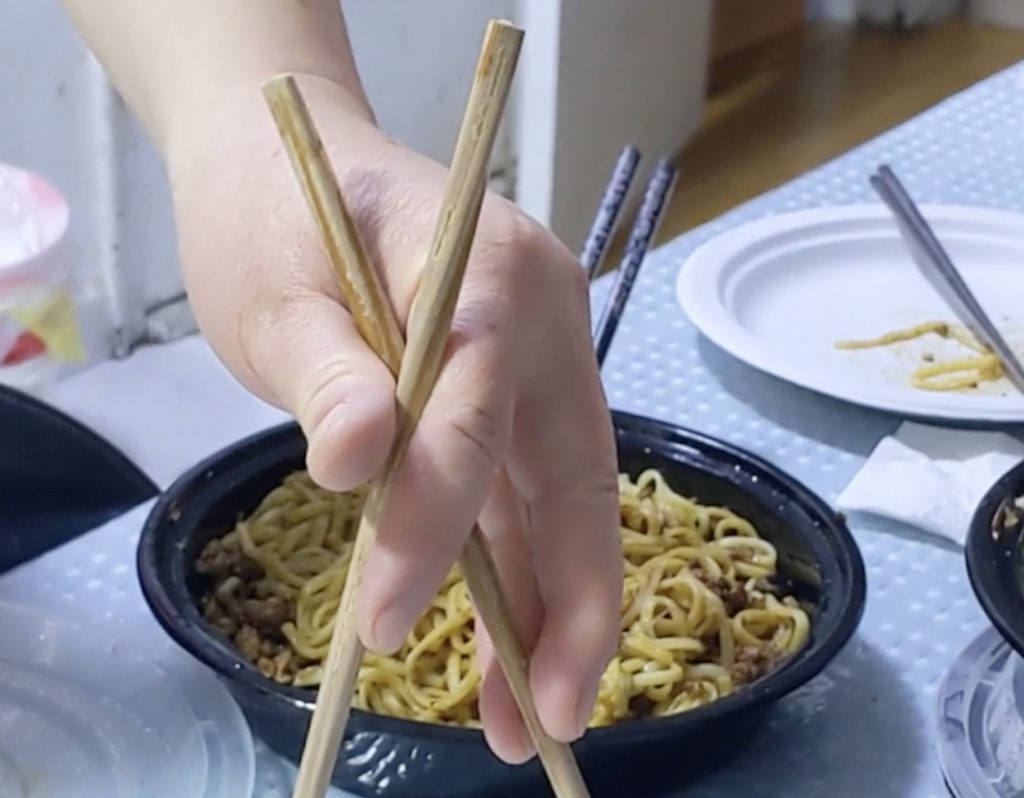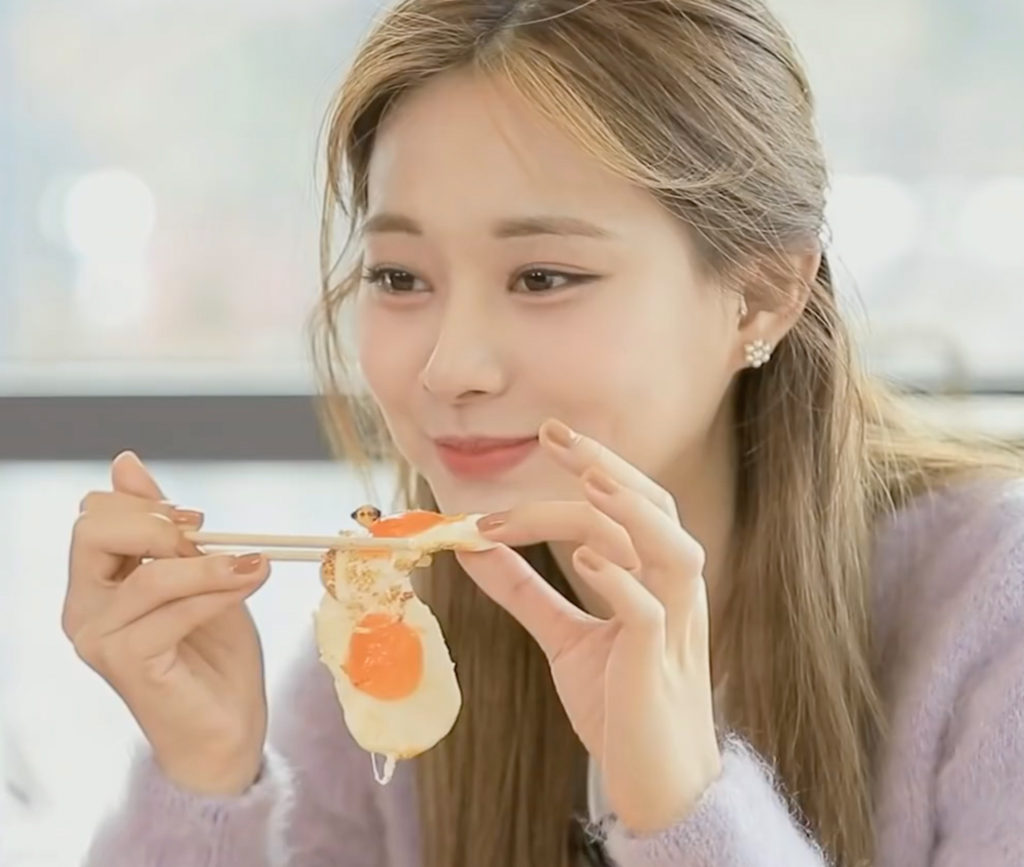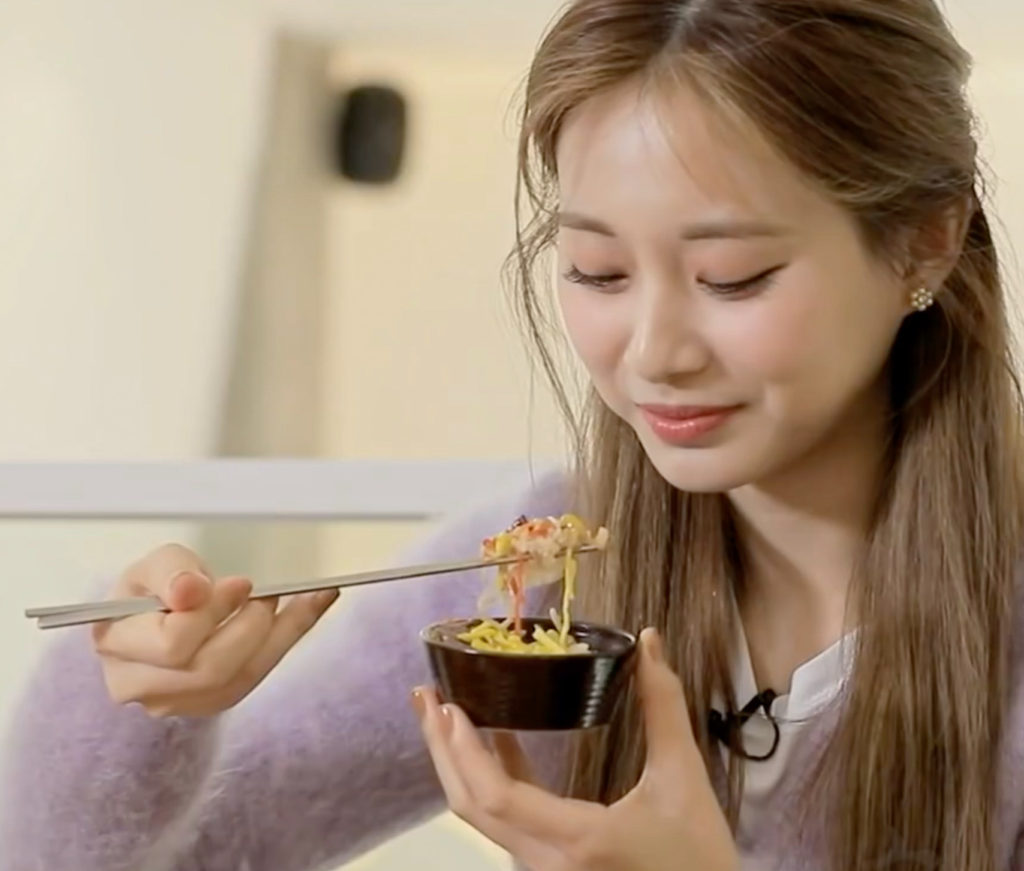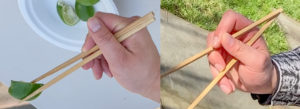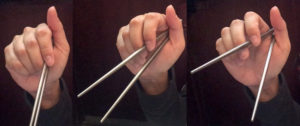Last Updated on July 15, 2022 by Staff
Double Tripod is a variant of Standard Grip where the bottom chopstick too is supported by a tripod of three fingers. This grip shares a great deal of common finger dynamics with Standard Grip which is already well-covered in both the Standard Grip article, and the how-to-use-chopsticks article.
This short article highlights the special feature that separates Double Tripod from Standard Grip. This is a double-tripod chopstick grip, whereas Standard Grip is a single-tripod grip.
Double Tripod is a mild form of Equal Opportunity. Both operate on the same principles. The ring finger in Double Tripod recedes more into the background, making ways for the middle finger to bring the top chopstick down, as we will elaborate further down. Equal Opportunity, however, has the ring finger firmly sitting on the bottom chopstick. This causes conflicts with the middle finger at the Closed posture.
Table of Contents
The name
Standard Grip calls for what we named a tripod hold, for securing and manipulating the top chopstick. This involves the use of three fingers in a tripod configuration, as shown below. The thumb, the index finger and the middle finger provide equal support for each of the three tridants.
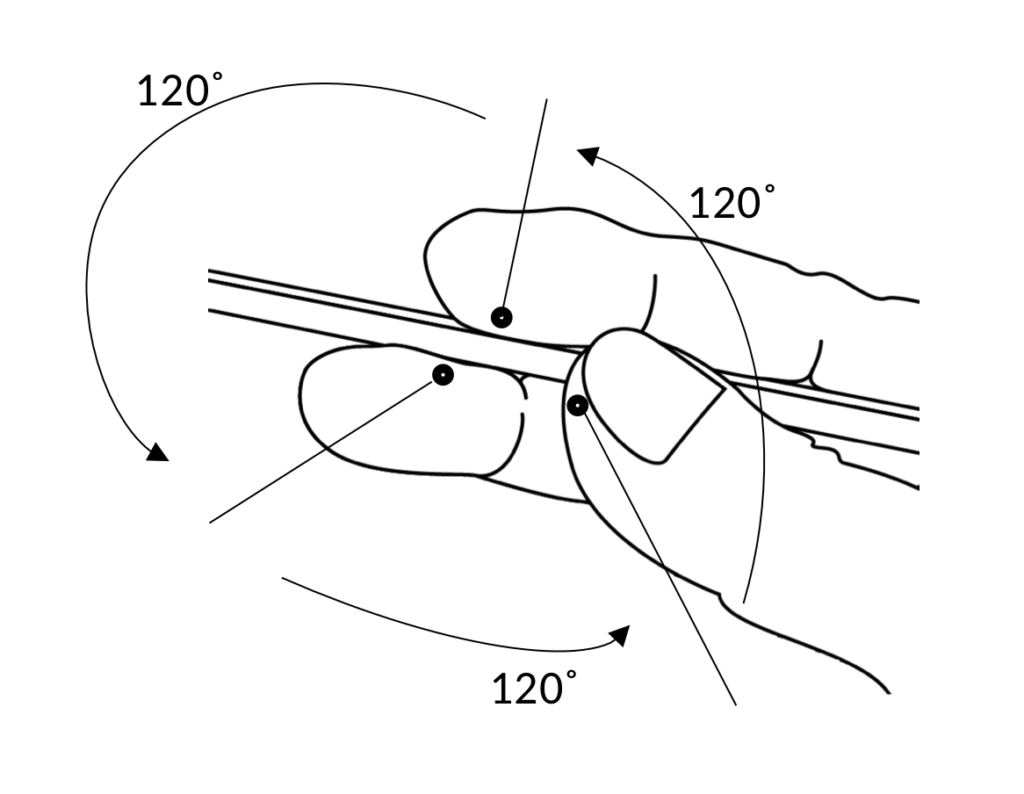
In Standard Grip, the bottom chopstick is supported by what we named the 1-on-2-support, as illustrated below. The base of the thumb sits on the bottom chopstick, supported by the purlicue and the distal knuckle of the ring finger.
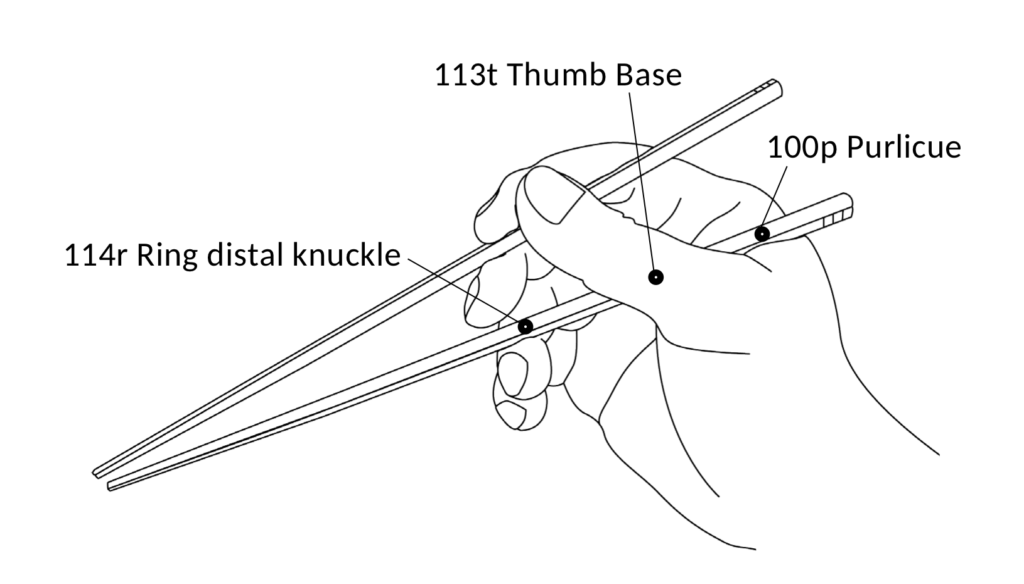
Following pictures show the Closed posture (left) and the Max open posture (right) of Standard Grip. Note that both the tripod hold and the 1-on-2-support remain operational at both postures, and in between them.
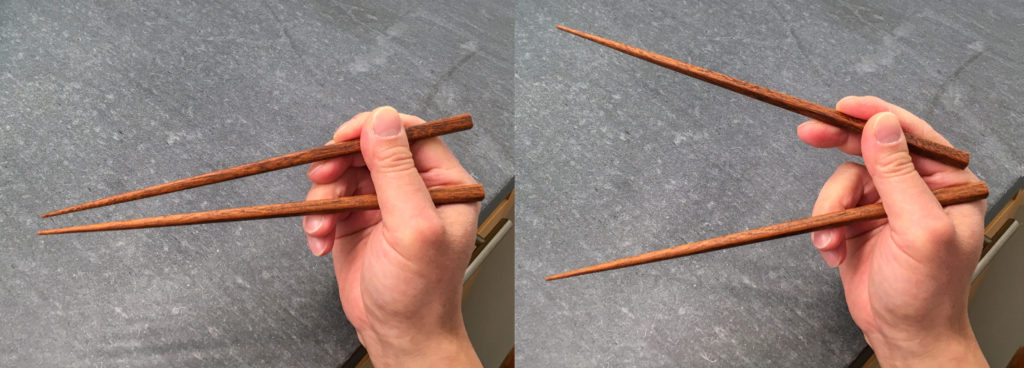
Now compare Double Tripod, shown below, to the Standard Grip shown above. The key difference between these two grips comes from how the ring finger and the pinky operate. Note how the bottom chopstick is now held by the base of the thumb, the tip of the ring finger, and the knuckle of the pinky. These three fingers form a second tripod hold.

Following image illustrates the supporting points of these two tripod holds. Red circles indicate tripod support for the top chopstick. Green circles indicate tripod support for the bottom chopstick.
Presumably the second tripod helps secure the bottom chopstick, preventing it from moving up and down, since it is now caged in that direction by the ring finger and the pinky. But as we will see later, this is not always the case.
Following is the stereotypical open posture of Double Tripod seen from various angles.

Alternating motion
Following is a video clip of Double Tripod in action. The practitioner extends and closes tips of chopsticks in an alternating motion. As is the case in Standard Grip, the extension movement is a mirrored version of the closing movement. Mirrored extension and closing movements are exceptions in chopsticking. Most grips in the family tree of chopstick grips are unlike Standard Grip and Double Tripod. Most grips have asymmetrical extension and closing movements.
In the next video, the same practitioner slows down her finger movements to more clearly illustrate the intricate obstacle avoidance dance performed by the middle finger and the ring finger. There is a reason why the tip of the ring finger “stands” on the bottom chopstick, instead of the flesh or palp of the ring finger caging the bottom chopstick between it and the pinky.
The next video is a slow-motion replay of the above video. The tip of the ring finger stands on the chopstick, in order to make room for the middle finger which needs to swing past the ring finger, in order to completely bring tips of chopsticks closed.
Following is a front view of Double Tripod. The conflict between the middle finger and the ring finger is apparent.
Compared to Equal Opp
As mentioned, Double Tripod is a mild form of Equal Opportunity. And as just explained, the ring finger in Double Tripod recedes more into the background, making ways for the middle finger to bring the top chopstick down, as we will elaborate further down.
Equal Opportunity, however, has the ring finger firmly sitting on the bottom chopstick. This causes conflicts with the middle finger at the Closed posture.
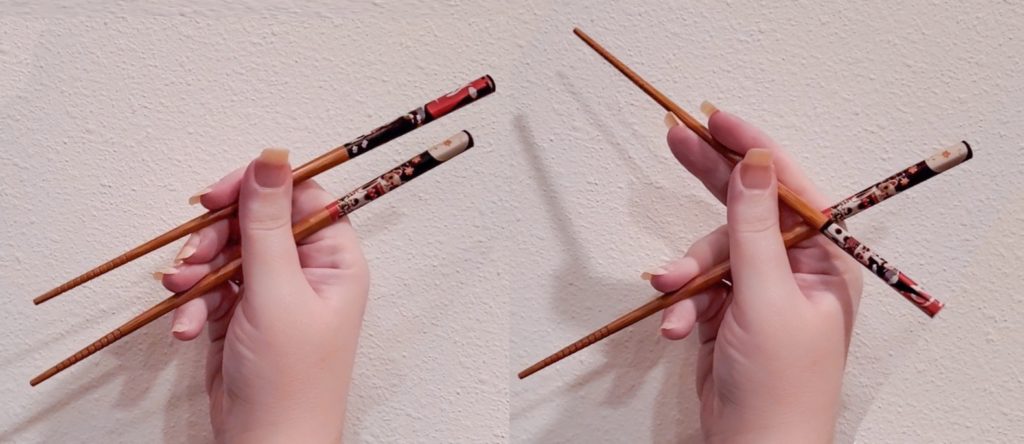
Is the second tripod hold necessary?
Questions naturally arise, about the necessity of a second tripod hold on the bottom chopstick, especially given that the middle finger and the ring finger stand in each other’s way while the hand operates chopsticks.
The truth is, this second tripod hold is not as secure as the 1-on-2-support from Standard Grip. There are several reasons for this. The first is that the orientation of the pinky now primarily accommodates the ring finger. The pinky is slanted to support the bottom chopstick as the ring finger pushes down on it. The pinky no longer presents a surface orientation optimized for the 1-on-2-support from Standard Grip. The second tripod hold does not add to the existing 1-on-2-support. It takes away from the 1-on-2-support.
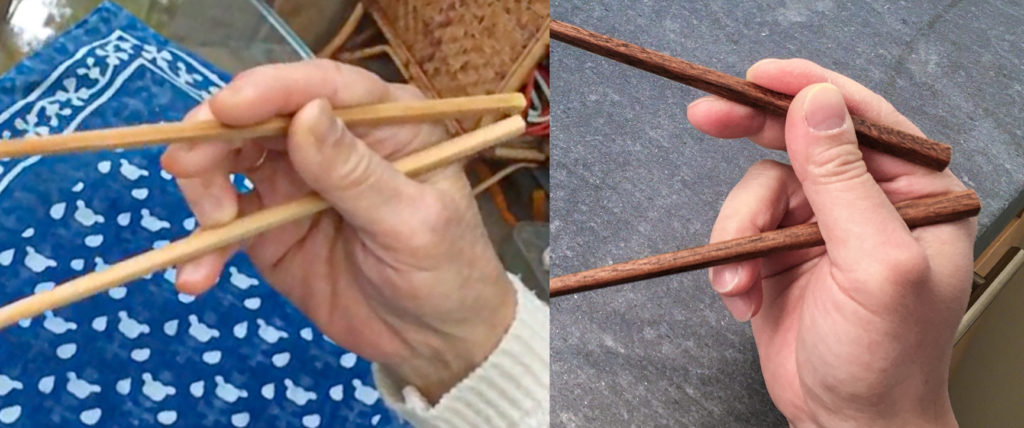
The next image illustrates this from better vantage point. Note how the pinky presents a slanted surface that is optimized for the ring finger, and not for the base of the thumb.
Another reason has to do with the unnatural thumb pose we discussed in Caswellian thumb and chopsticks. This thumb pose for Standard Grip is shown below, from a different perspective. This awkward thumb pose is often a source of chopstick cramp, for some people. The two segments of the thumb must be extended flat, in order for the base of the thumb to secure the bottom chopstick, while the tip segment of the thumb operates the top chopstick.
Compare the next image of Double Tripod to the previous image from Standard Grip. Note how much higher the pinky in Double Tripod needs to be raised, in order to prop up the bottom chopstick against the base of the thumb. The pinky needs to be raise to the height of the ring finger in order for the 1-on-2-support to work. If the pinky drops from this placement, then the thumb needs to extend beyond flat, in order to press down and secure the bottom chopstick.
Picking up chopsticks
Following is a video of a practitioner picking up chopsticks from the table. Lately we find ourselves filming chopsticking motions we previously neglected. We have come to realize that the way practitioners pick up chopsticks and find proper finger placements is fascinating. Everyone has her own ways of sorting chopsticks in their hands.
Perhaps that was too fast. Here is the crucial part in slow motion. Follow the ring finger in the beginning, as it gets into its target placement, after the hand grasps the two chopsticks, and stand them on their tips against the table. Then watch how the middle finger clears the ring finger, to extend chopsticks apart.
Found in the wild
Here are some pictures of Double Tripod found in the wild.
The Double Tripod grip illustrated on p39 of the book “From Hand to Mouth – How we invented knives, forks, spoons, and chopsticks, & the table manners to go with them”
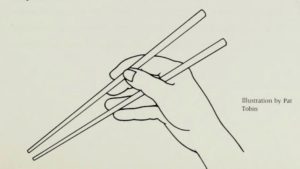
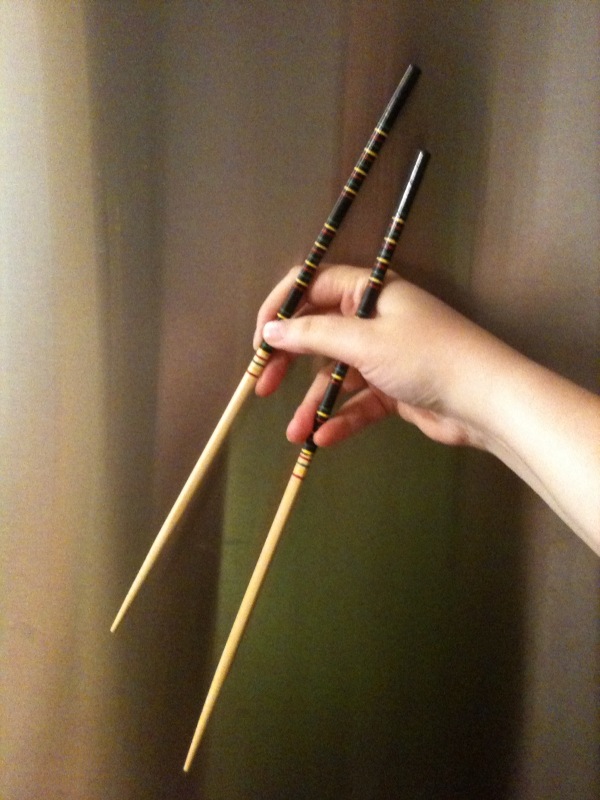
Here is a video of a practitioner picking up blueberries with Double Tripod.
Bottom tripod as a chopsticking factor: “.5” variants
(2021-02) One goal for the identification and analysis of alternative chopstick grips is to discover patterns in grips. We started with the identification of swing type where all grips could be classified by this chopsticking factor into one of three buckets: classic swing, sideway swing, and underswing. Then we found that using or not use the thumb pad is a factor that divided grips roughly into two equal populations. Then we discovered that there was a large family of grips that shared an identical Compression posture, the Lateral chopstick grips.
With every additional video and photo capture of yet another practitioner wielding chopsticks, we identify more and more such chopsticking factors. Take a look at the following grip. It is a variation of Vulcan Grip, where the bottom chopstick is not only supported by the ring finger. Instead, it employs a tripod hold similar to Double Tripod, for the bottom chopstick.
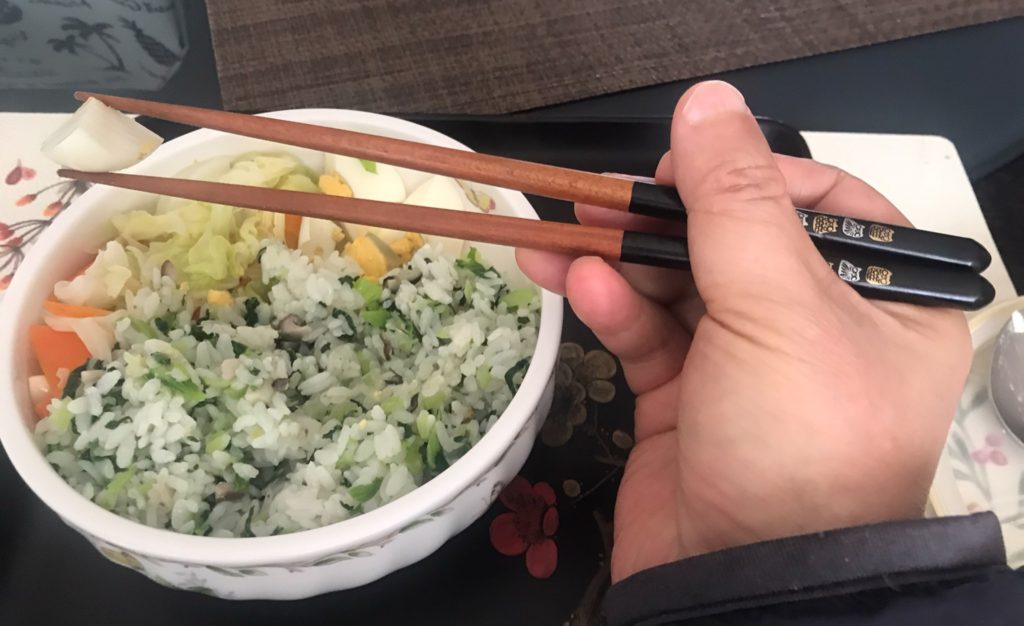
Here is yet another view of the same Vulcan grip variant.
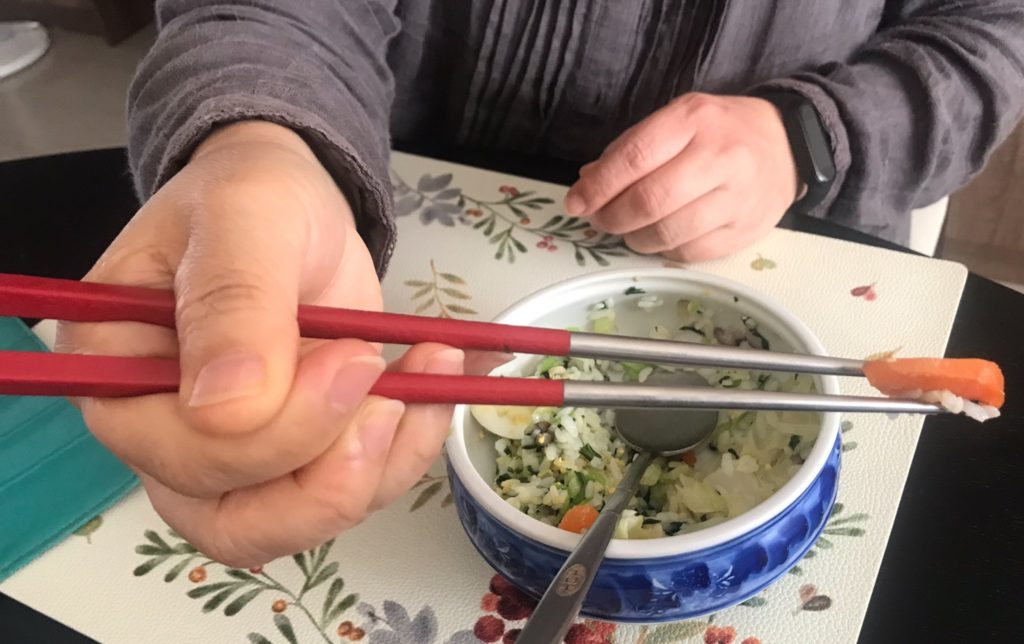
Our working conjecture is that most thumb-using grips have a theoretical variant where the bottom chopstick is supported by this Bottom Tripod. As we record more practitioners, we will surely find bottom-tripod variants for all thumb-using grips where such variant is possible. There are, of course, thumb-using grips where Bottom Tripod is not possible. For instance, Beetle Mandibles will never have such variants.
Here is another example. This is a Scissorhand with a bottom tripod support.
We shall check back in time, to confirm this hypothesis. That is how science works.
(2021-08) So we have found more variants like this, for two more scripts: for Idling Thumb and for Double Hook. See Chopstick Grips of TWICE Members. We have now come to name these variants the “.5” variants in our Classification of Chopstick Grips. So we have Standard Grip.5 which is Double Tripod. Vulcan.5, Scissorhand.5, Idling Thumb.5 and Double Hook.5.
A variation of Double Tripod
As another example of the idea that the top tripod and the bottom tripod can be considered as separate factors, here we have another variation of Double Tripod.
This practitioner does not adopt the unnatural Caswellian Thumb Pose called for by Standard Grip. Her thumb is extended straight and parallel to the rest of her hand and arm. This makes for an insecure grasp of the bottom chopstick. But she compensates for this by extending both the ring finger and the pinky straight, to prop up the bottom chopstick against the base of the thumb with enough leverage.
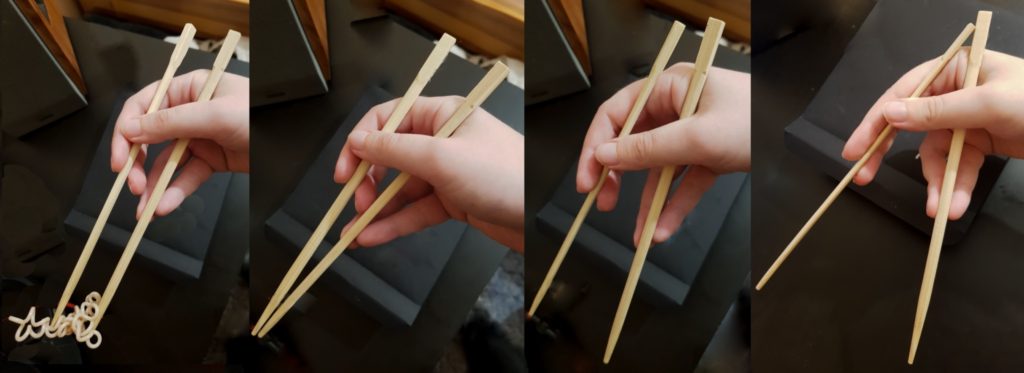
Following images show the Closed posture from different perspectives. From these angles, it can be clearly seen that this variant adopts Vulcan-like support for the bottom chopstick. That is, the pulp of the ring finger is used to prop up the bottom chopstick, like is the case in Vulcan Grip. This is different from the usual Double Tripod, where knuckles, not pulp, of the middle finger and of the ring finger are used to cage chopsticks.

Taiwanese: 双三脚株
This grip is known as 双三脚株 (Siang saⁿ-kha-tu) in Taiwanese.
* Pictures courtesy of u/Shushuda


